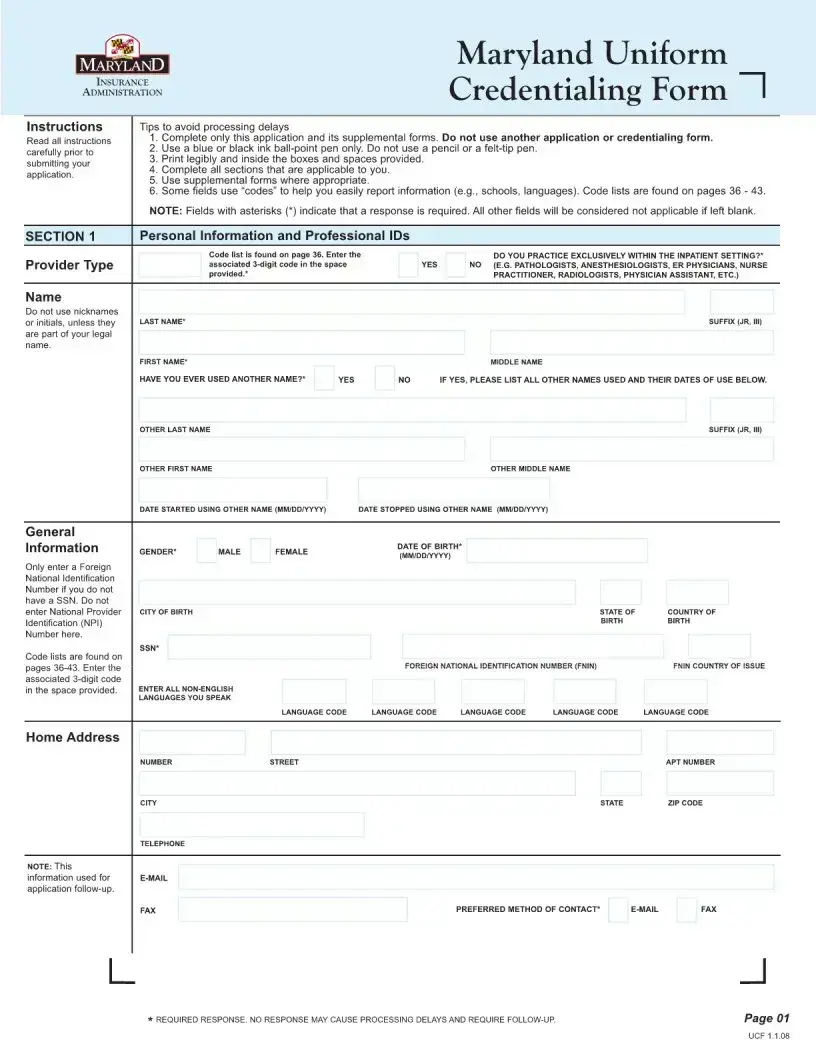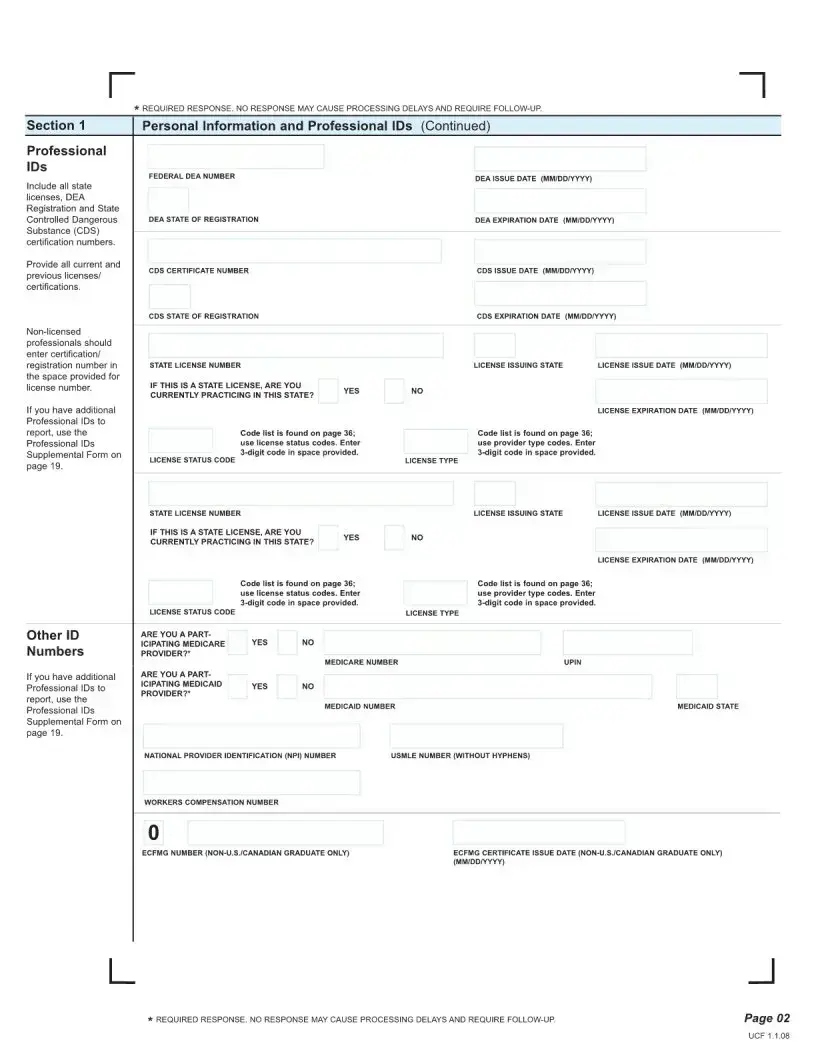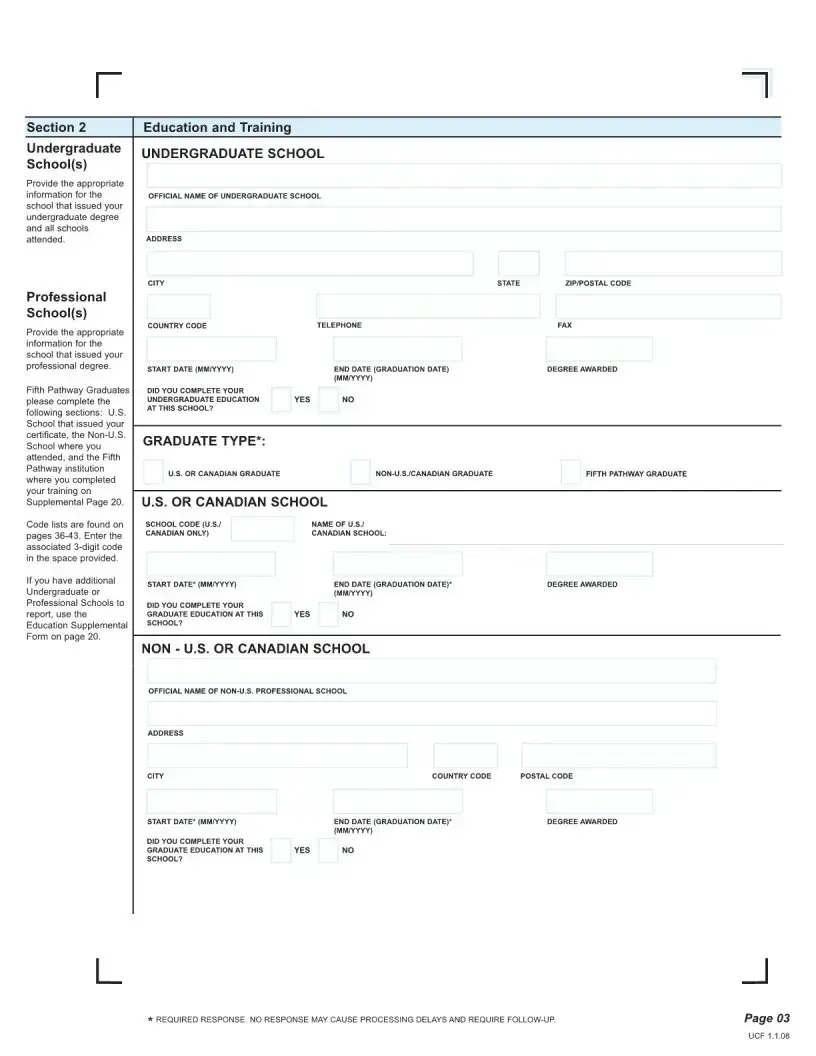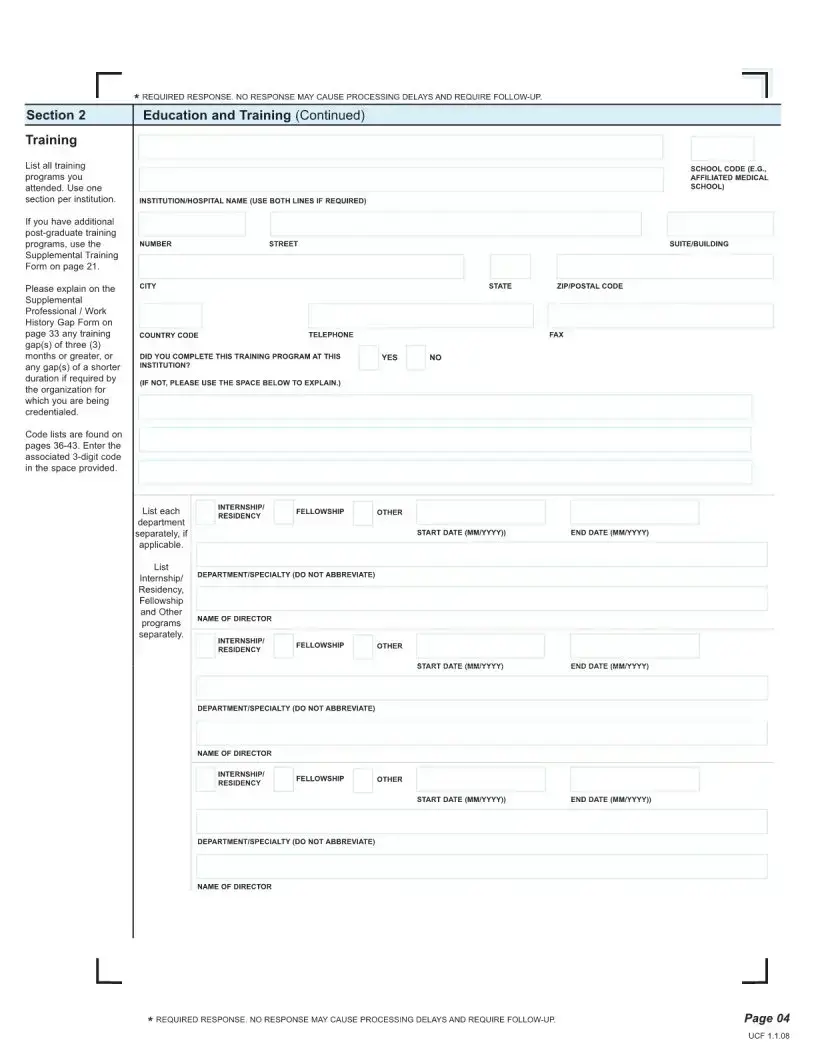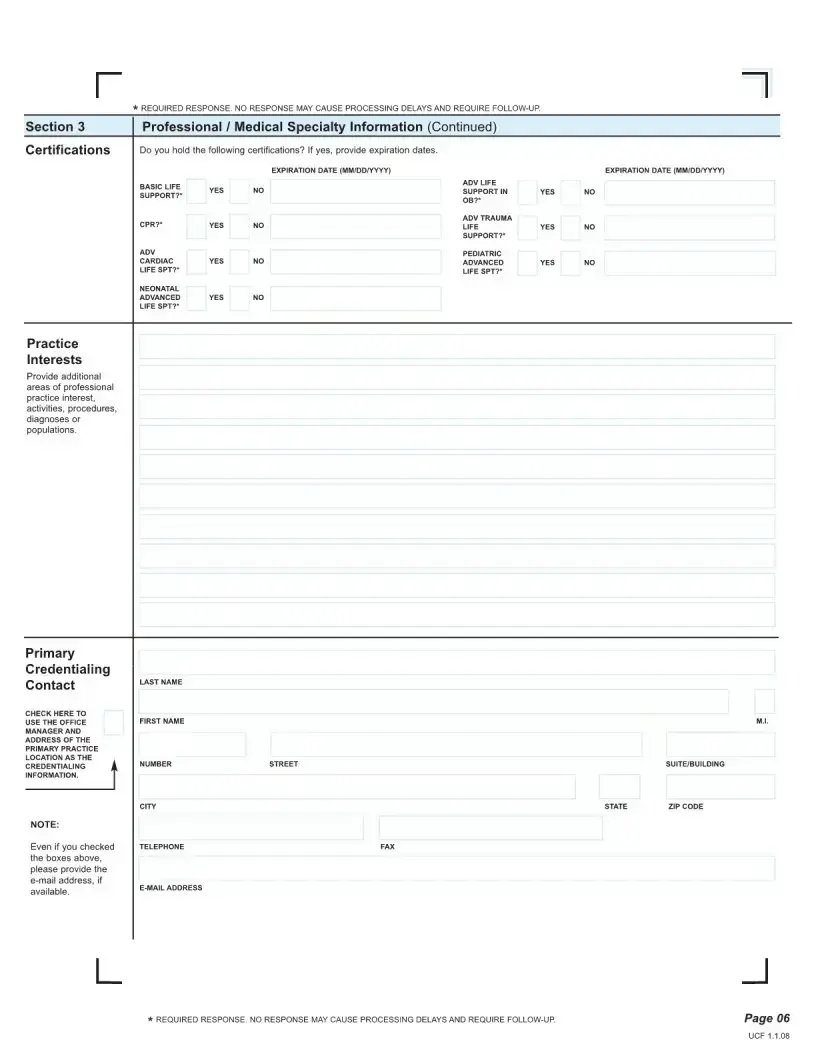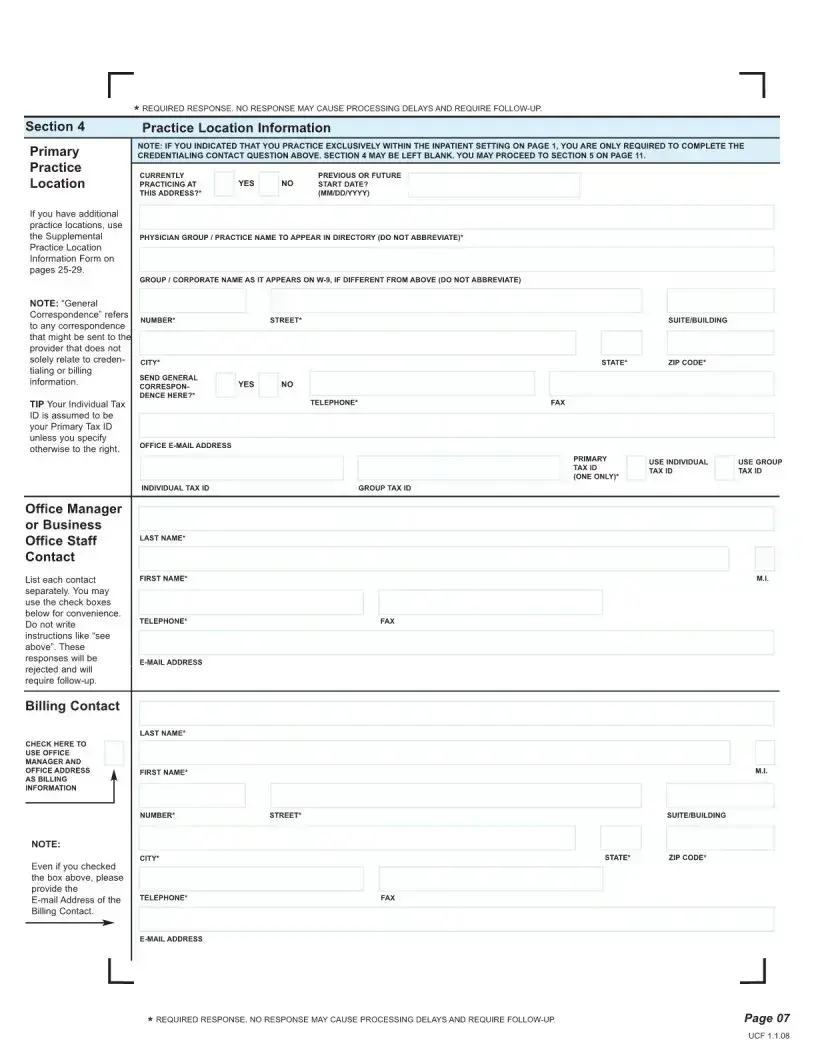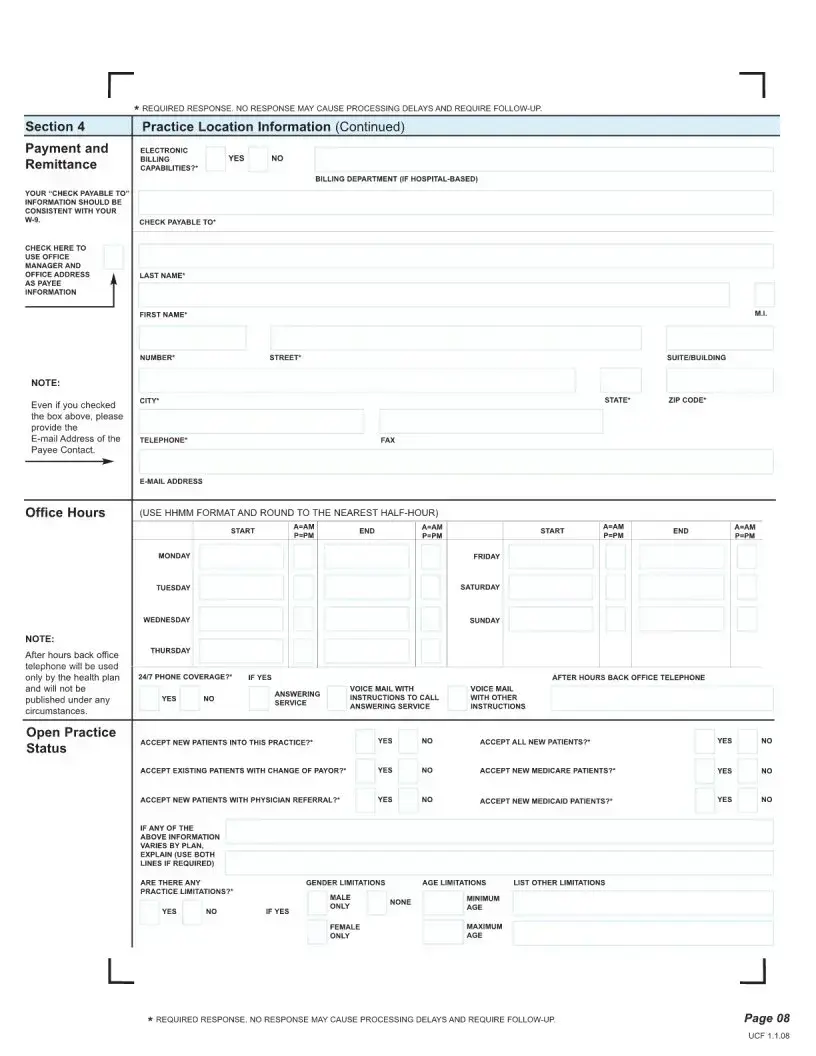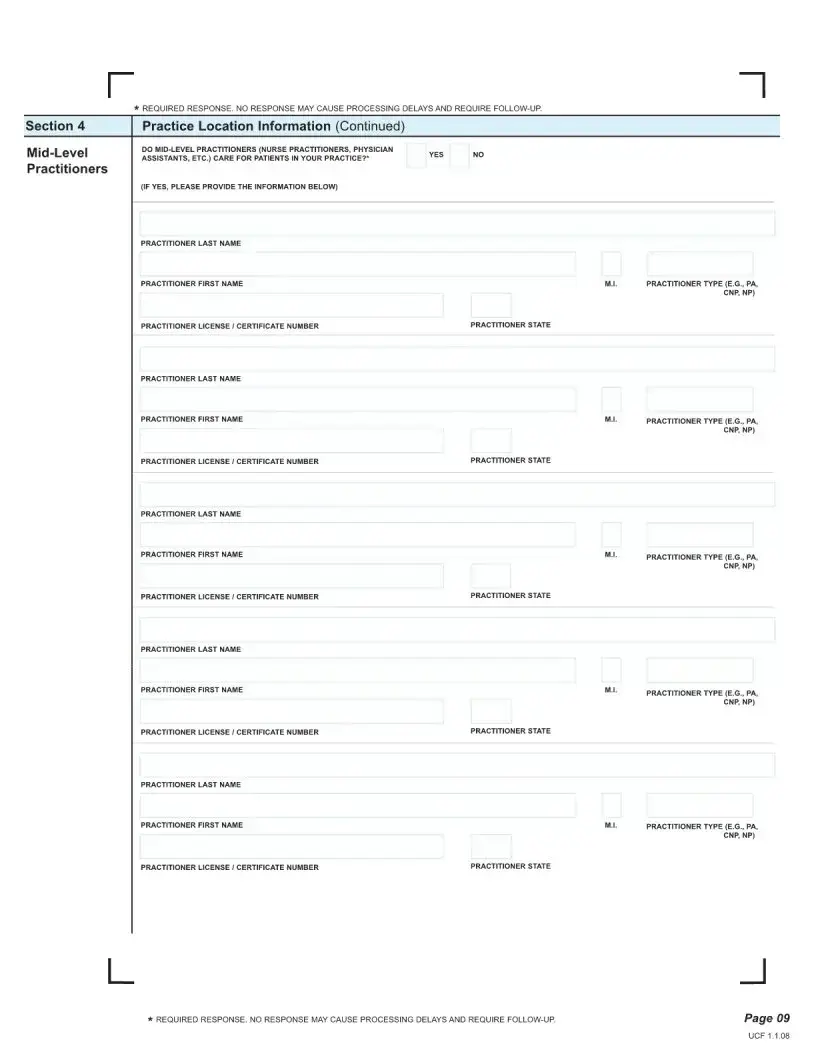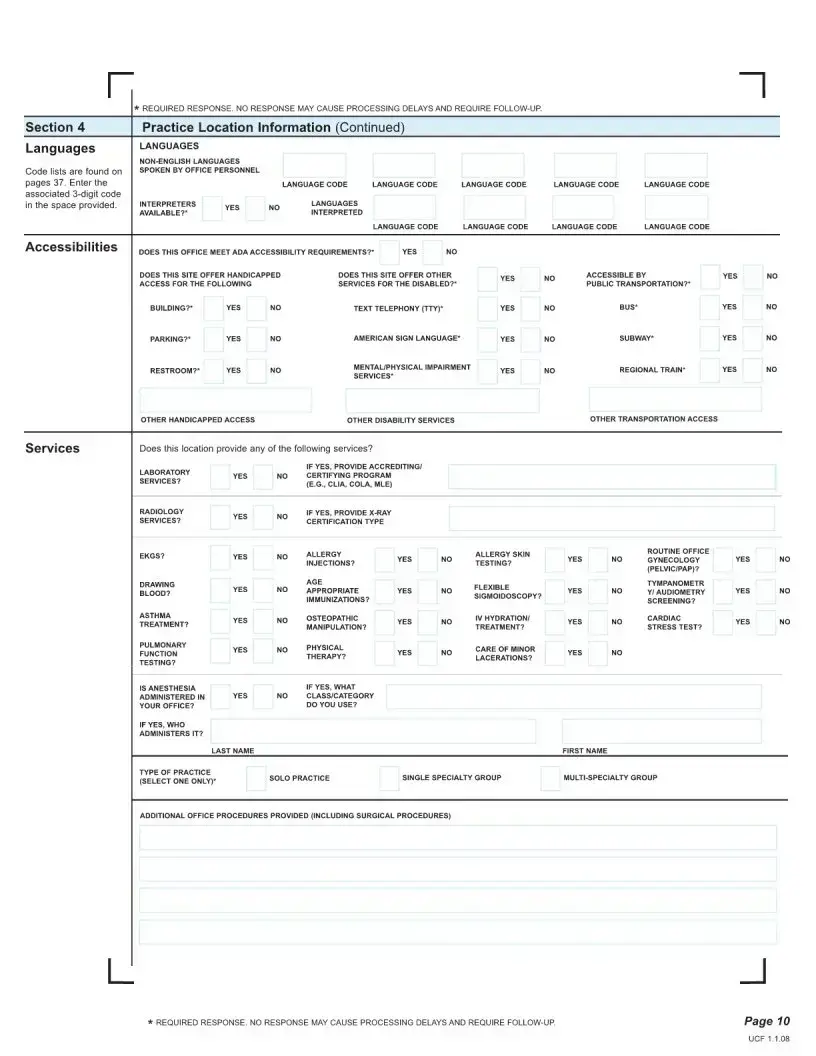The Maryland Uniform Credentialing Form is a standardized document used by healthcare providers in Maryland to apply for credentials or privileges at healthcare organizations, such as hospitals and health insurance networks. The form streamlines the process by consolidating the required information into a single document, making it easier for both providers and organizations to handle credentialing applications.
Healthcare providers who wish to join a hospital, clinic, or health plan network in Maryland should complete the Maryland Uniform Credentialing Form. This includes doctors, nurses, therapists, and other healthcare practitioners seeking to offer services through these institutions. Completing and submitting this form is a crucial step in the credentialing process, which allows a healthcare provider to practice within a specific organization.
The form requests a variety of information necessary for the credentialing process, including:
-
Personal and professional information (such as name, contact details, and Social Security number)
-
Educational background (including schools and dates of attendance)
-
Work history (listing all healthcare positions)
-
Professional licenses and certifications (type, number, and expiration date)
-
Professional liability insurance coverage details
-
Information on any disciplinary actions or malpractice claims
It is crucial to provide accurate and complete information to avoid delays in the credentialing process.
The completed Maryland Uniform Credentialing Form can be submitted in one of two ways:
-
Electronically, via the email or web portal specified by the healthcare organization or insurance network. This is often the preferred method for its ease and efficiency.
-
By mail, if the receiving organization allows for it, to the address provided by them. It's important to check with the specific organization for any special mailing instructions.
Providers should ensure that they receive a confirmation of receipt to verify that their application is being processed.
The deadline for submitting the Maryland Uniform Credentialing Form varies by healthcare organization and insurance network. It is advisable to submit the form well in advance of when you wish to start providing services or at the onset of the renewal process for existing credentials. Providers should check directly with the organization to which they are applying for specific deadlines.
After submission, the credentialing department of the receiving organization will review the form for completeness and verify the provided information. This process may include checking the provider's educational background, license validity, work history, and any malpractice history. Providers may be asked to furnish additional information or clarification during this time. Once the review is complete, the organization will notify the provider of their credentialing status. This process can take several weeks to months, depending on the organization's procedures and the completeness of the application.
